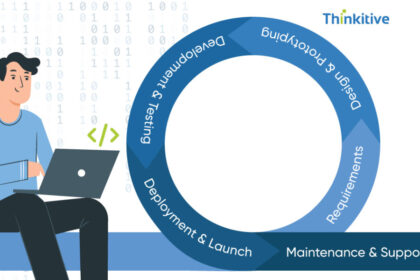Are you ready to supercharge your digital marketing strategy and unlock the potential for unprecedented returns? In today’s fast-paced online landscape, businesses are constantly competing for attention—and with that competition comes the challenge of maximizing your return on investment (ROI). Whether you’re a small startup looking to make waves or an established brand aiming to refine your approach, understanding how to effectively leverage every dollar spent on digital marketing is crucial. In this blog post, we’ll explore 10 actionable strategies tailored for U.S. market dynamics that will not only help boost your campaign performance but also skyrocket your ROI. Say goodbye to wasted budgets and hello to measurable results—let’s dive in!
Introduction: Importance of ROI in Digital Marketing
In the fast-paced world of digital marketing, maximizing your return on investment (ROI) isn’t just a goal—it’s a necessity. With brands vying for attention in an ever-crowded online space, understanding how to make every dollar count can set you apart from the competition. As consumers increasingly shift their purchasing behaviors toward digital platforms, knowing how to navigate this landscape is crucial for success.
The U.S. market offers unique opportunities and challenges that require savvy strategies and keen insights into consumer behavior. Whether you’re launching a new campaign or refining existing efforts, ensuring you get the most out of your investments should be at the forefront of your strategy. Ready to optimize your campaigns? Let’s dive into ten proven ways to enhance ROI from digital marketing campaigns in the U.S.!
Understanding the U.S. Market: Trends and Consumer Behavior
Understanding the U.S. market is crucial for any digital marketing campaign. The landscape is dynamic, influenced by evolving consumer preferences and technological advancements.
Recent trends indicate a shift towards personalization. Consumers now expect tailored experiences that resonate with their unique interests and needs. Brands that deliver personalized content tend to see higher engagement rates.
Another noteworthy aspect is the growing emphasis on sustainability. Many American consumers are increasingly favoring brands that demonstrate environmental responsibility. This trend can significantly influence purchasing decisions.
Social media plays a pivotal role in shaping consumer behavior as well. Platforms like Instagram and TikTok have become vital spaces for brand discovery and interaction, especially among younger demographics.
Moreover, mobile usage continues to rise, making it essential for marketers to optimize campaigns for smartphones and tablets. Understanding these nuances allows businesses to craft strategies that effectively connect with their target audience in this diverse market.
Setting Goals and Objectives for Your Campaign
Setting clear goals and objectives is vital for your digital marketing campaign’s success. Without them, you’re navigating in the dark.
Identify what you want to achieve. Is it increased brand awareness, lead generation, or sales growth? Each goal directs your strategies differently.
Make these goals SMART: Specific, Measurable, Achievable, Relevant, and Time-bound. This framework sharpens focus and helps in tracking progress effectively.
Once established, communicate these objectives across your team. Everyone should understand the mission they are working towards.
Regularly revisit and adjust these goals as needed. The digital landscape evolves quickly; staying adaptable ensures you’re always on track to maximize ROI from digital marketing campaigns in the U.S.
Targeting the Right Audience
Identifying the right audience is crucial for maximizing ROI. Without a clear understanding of who your customers are, even the best campaigns can fall flat.
Start by building detailed buyer personas. Consider demographics, interests, and online behaviors. This information helps you tailor your message effectively.
Utilize social media insights and analytics tools to refine your targeting further. These platforms provide invaluable data about user engagement and preferences.
Don’t forget about segmentation. Divide your audience into smaller groups based on shared traits or behaviors. This allows for personalized marketing strategies that resonate with each segment.
Testing different approaches is also beneficial. A/B testing can reveal which messages connect better with specific audiences, leading to more effective campaigns in real-time.
Incorporating feedback loops offers another layer of insight. Regularly ask for input from current customers to ensure you’re meeting their needs and expectations effectively.
Leveraging Social Media Platforms
Social media platforms have transformed the way brands connect with their audience. With billions of active users, these channels are a goldmine for digital marketers.
Each platform caters to different demographics and interests. Understanding where your target audience spends their time is crucial. Tailor your content accordingly to engage effectively.
Visual content thrives on Instagram and TikTok, while LinkedIn serves well for B2B interactions. Craft posts that resonate with each community’s unique culture.
Engagement goes beyond likes; it’s about building relationships. Responding to comments or messages fosters loyalty among followers.
Utilize analytics tools available on these platforms. They provide insights into what works and what doesn’t, allowing you to refine strategies over time.
Collaborate with influencers who align with your brand values. Their authentic voice can expand your reach significantly, tapping into new audiences organically without losing credibility in the process.
Creating Engaging Content
Creating engaging content is essential for capturing your audience’s attention. It’s not just about relaying information; it’s about making a connection.
Start by understanding what resonates with your target demographic. Use polls or surveys to gather insights into their preferences and interests. This data can guide your content strategy.
Visual elements play a crucial role too. Including images, infographics, or videos can improve engagement rates significantly. A striking visual paired with compelling text will keep visitors on your page longer.
Storytelling is another powerful tool. Share relatable experiences or customer testimonials that evoke emotions. People remember stories more than facts alone.
Finally, encourage interaction through comments or social media shares. Ask questions at the end of your posts to invite dialogue and foster community around your brand.
Utilizing SEO and PPC Strategies
SEO and PPC are two sides of the same coin when it comes to digital marketing. Both strategies can work in harmony to enhance your campaign’s visibility.
Investing in SEO ensures that your website ranks high on search engines. This drives organic traffic without ongoing costs per click. It builds credibility and establishes a long-term presence in the market.
On the other hand, PPC offers immediate results. With targeted ads, you reach specific demographics quickly. You control your budget while gaining insights into what resonates with potential customers.
Combining these strategies allows for a balanced approach. Use SEO to create quality content that engages visitors and improves rankings over time. Meanwhile, employ PPC for short bursts of traffic during key promotions or product launches.
Together, they optimize your resources and amplify overall effectiveness in reaching desired audiences across various platforms.
Mobile Optimization
Mobile optimization is no longer optional; it’s essential. With mobile devices accounting for over half of global internet traffic, your digital marketing campaigns must cater to this audience.
Responsive design plays a pivotal role in ensuring that websites function seamlessly across various screen sizes. A site that looks good on desktops may not provide a pleasant experience on smartphones.
Load speed is another critical factor. Users are impatient and expect quick access to information. Optimize images and streamline code to enhance performance.
Content should also be tailored for mobile users. Shorter paragraphs, bullet points, and clear calls-to-action can make navigation easier on smaller screens.
Don’t forget about local SEO efforts as well. Many consumers conduct searches with local intent while using their phones, so optimizing for location-specific keywords can yield substantial returns in visibility and engagement.
Tracking and Analyzing Data
Tracking and analyzing data is the backbone of any successful digital marketing campaign. It helps you understand what’s working and what isn’t.
Utilizing tools like Google Analytics can provide deep insights into user behavior. You’ll see which pages are popular, where your traffic comes from, and how long visitors stay on your site.
Set up conversion tracking to measure specific actions that matter to your business. This could be anything from newsletter sign-ups to product purchases.
Don’t overlook A/B testing as a way to refine your strategies. By comparing different versions of ads or landing pages, you can pinpoint what resonates best with your audience.
Regularly reviewing these metrics allows for agile decision-making. Adjust campaigns in real-time based on performance indicators rather than waiting until the end of a cycle. Data-driven decisions lead to smarter investments in future strategies.
Collaboration with Influencers and Cross-promotion Opportunities
Influencer marketing has become a powerful tool for brands aiming to boost their digital presence. Collaborating with influencers allows you to tap into established audiences that trust their recommendations.
Finding the right influencer is crucial. Look for individuals whose values align with your brand and who resonate with your target audience. Authentic partnerships often yield the best results.
Cross-promotion opportunities can amplify your reach even further. Partnering with complementary brands creates a win-win scenario where both parties benefit from shared audiences.
Utilizing social media platforms effectively during these collaborations enhances engagement. Hosting joint giveaways or creating co-branded content can generate excitement and drive traffic to both partners’ channels.
Remember, transparency is key in any collaboration! Audiences appreciate honesty, so ensure that sponsored content feels genuine and trustworthy. This approach fosters loyalty, encouraging consumers to engage more deeply with your brand.
Evaluation and Improvement
Continuous evaluation and improvement play a crucial role in maximizing ROI from digital marketing campaigns. The landscape of digital marketing is dynamic, with consumer preferences and technology constantly evolving. To stay ahead, it’s essential to regularly assess your strategies.
Make use of analytics tools to track performance metrics. Identify which tactics are driving conversions and which ones need adjustment. Stay agile; don’t hesitate to pivot when necessary based on the data you gather.
Engage with your audience consistently. Solicit feedback through surveys or social media channels, allowing customers to share their experience directly with you. This not only improves customer satisfaction but also enhances brand loyalty.
Keeping an eye on industry trends can give you a competitive edge as well. Being aware of shifts in consumer behavior will allow you to adapt quickly and effectively, ensuring that your campaigns remain relevant.
Investing time into refining your approach will lead to greater efficiency in your marketing spend over time. Each campaign should teach valuable lessons that inform future efforts, helping ensure every dollar spent contributes positively toward achieving business goals.
With dedication to continuous improvement, businesses can unleash the full potential of their digital marketing efforts while significantly boosting return on investment across various platforms in the U.S market.
Conclusion
In today’s digital age, it is crucial for businesses to have a strong online presence and run effective digital marketing campaigns. By following these 10 tips, you can maximize your ROI from digital marketing in the U.S. Whether it’s through targeted ads or creating engaging content, understanding your audience and utilizing the right strategies can lead to significant success. With technology constantly evolving, it is important to stay up-to-date with the latest trends and techniques in order to stay competitive in the market. So go ahead and implement these tips into your next campaign and watch as your ROI grows!








